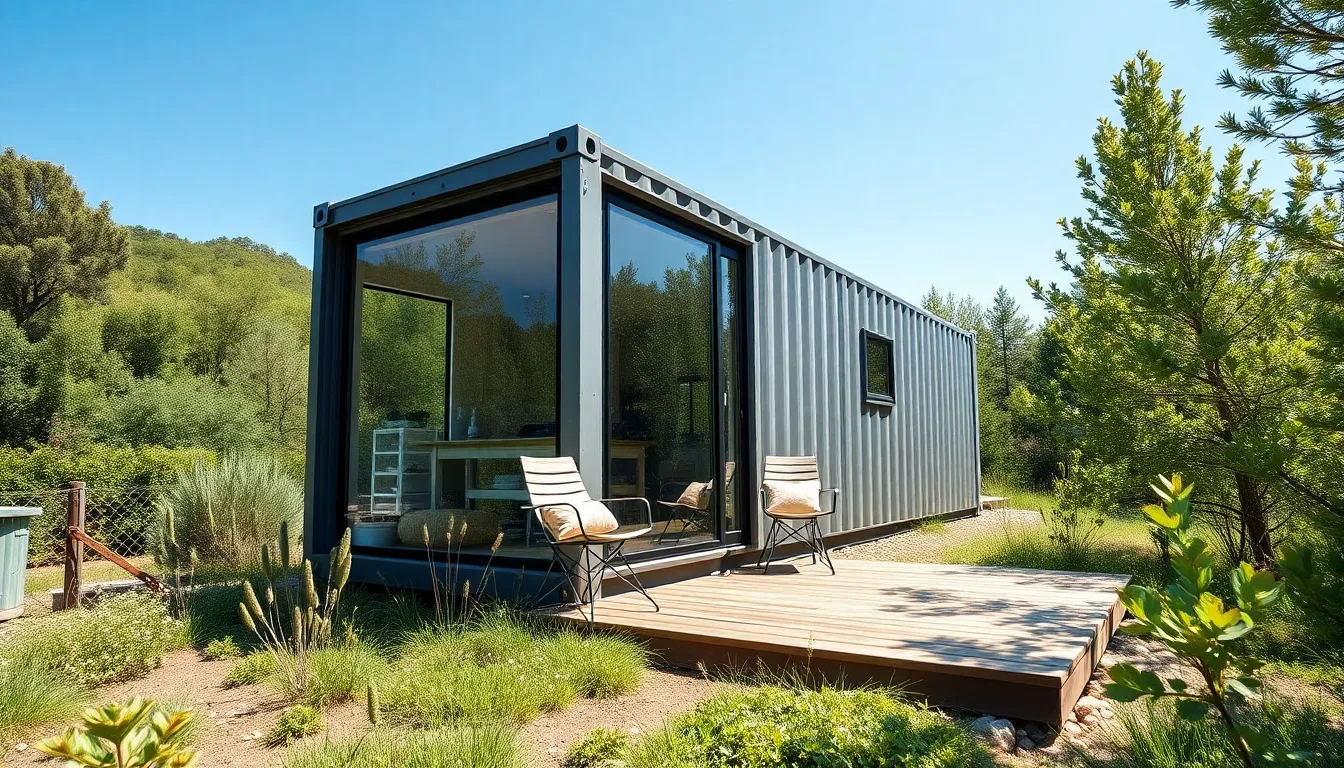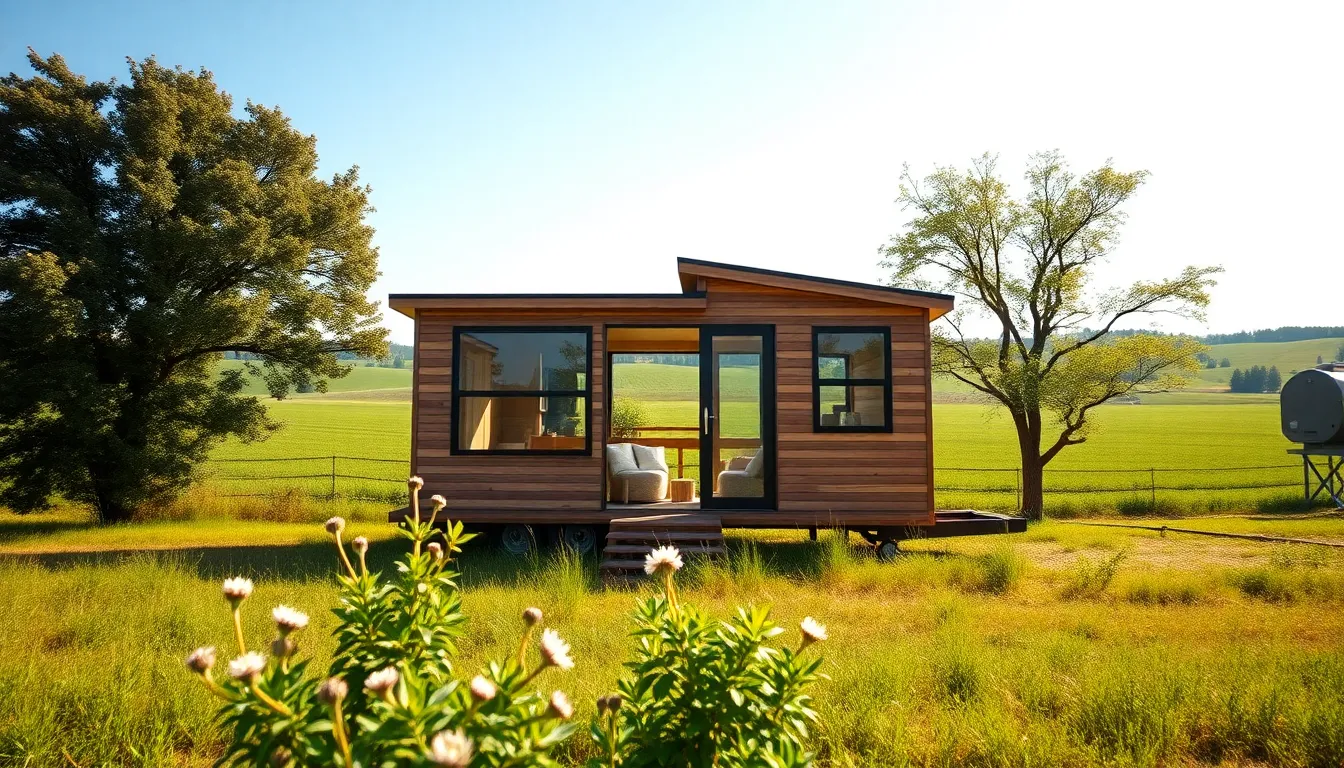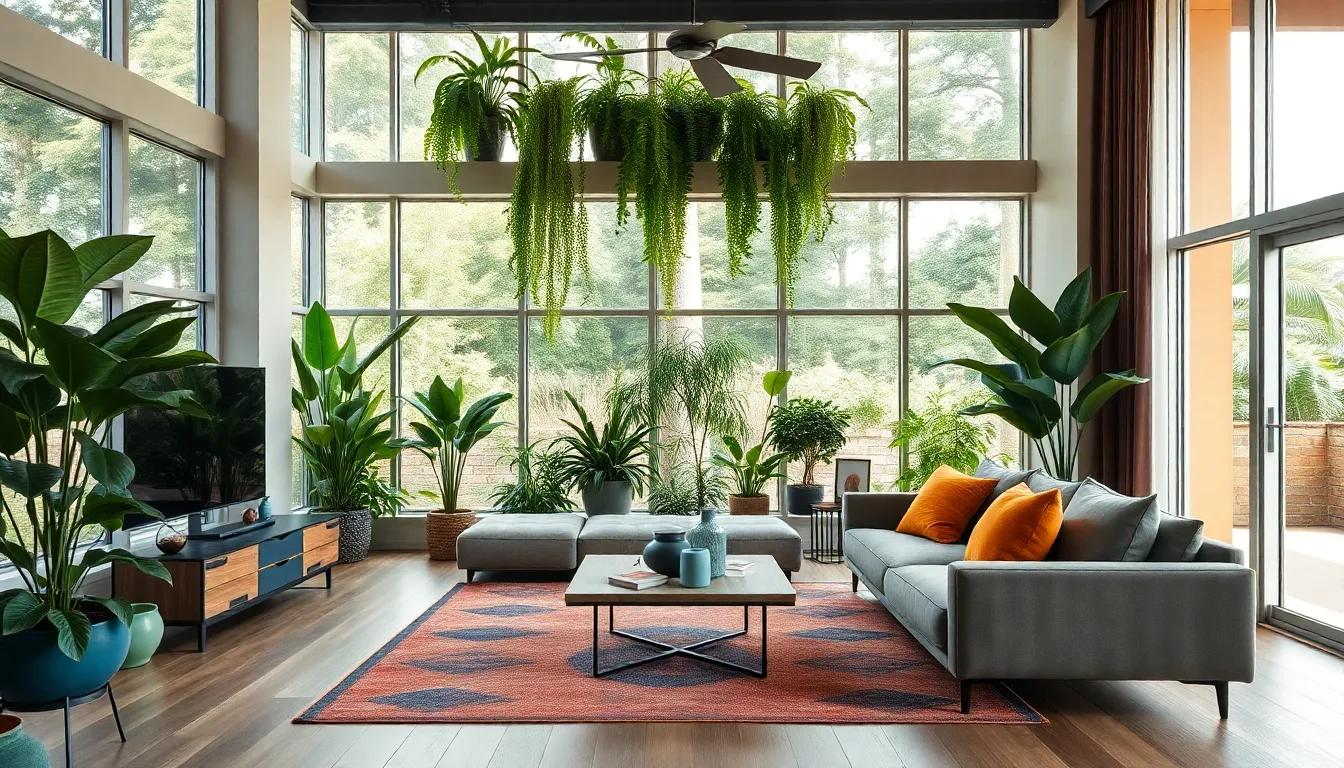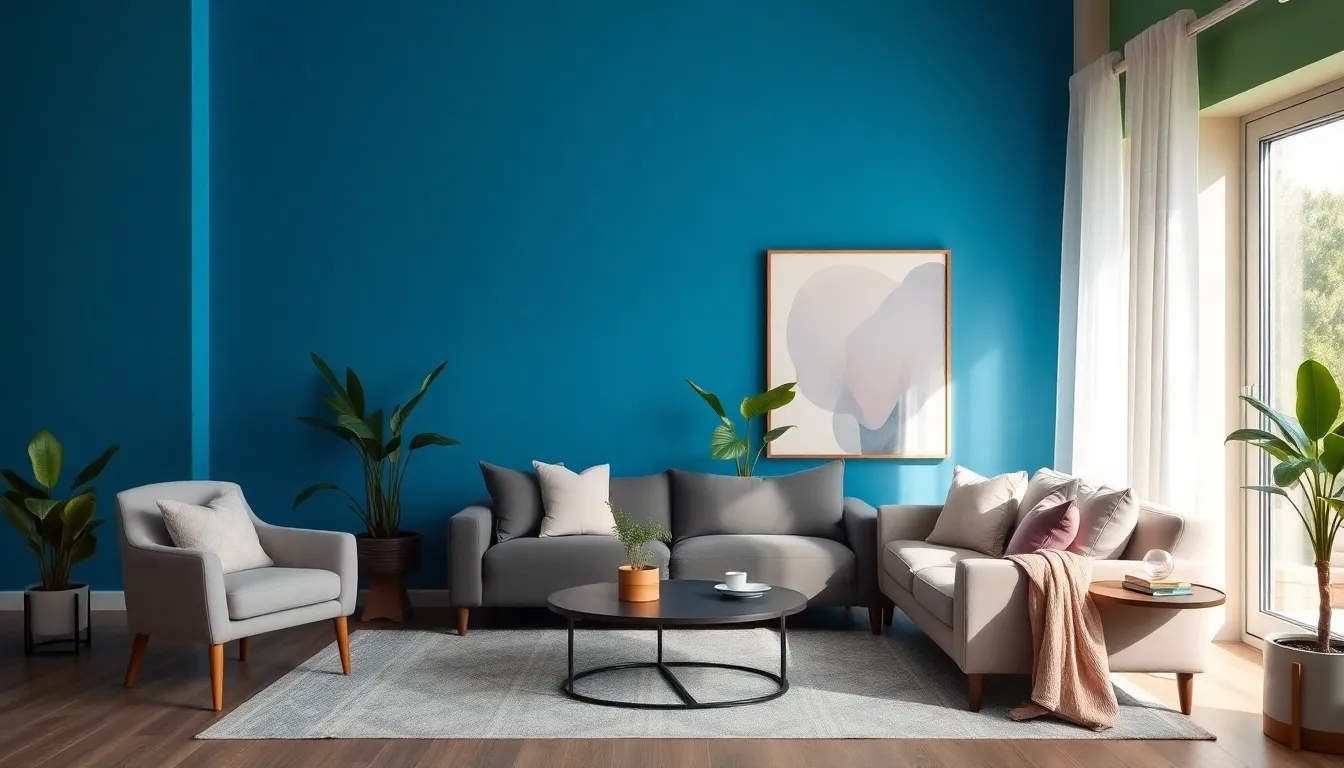Imagine living in a home that’s not only stylish but also eco-friendly. Tiny container homes are the new darlings of sustainable living, combining modern design with minimalism. These compact living spaces are like the Swiss Army knives of real estate, compact, functional, and surprisingly chic. Whether you’re a wandering minimalist or just tired of paying rent that feels like a mortgage on a mansion, these homes might be just the ticket. Let’s jump into the world of tiny container homes and explore what makes them the stylish choice for modern living.
Table of Contents
ToggleUnderstanding Tiny Container Homes
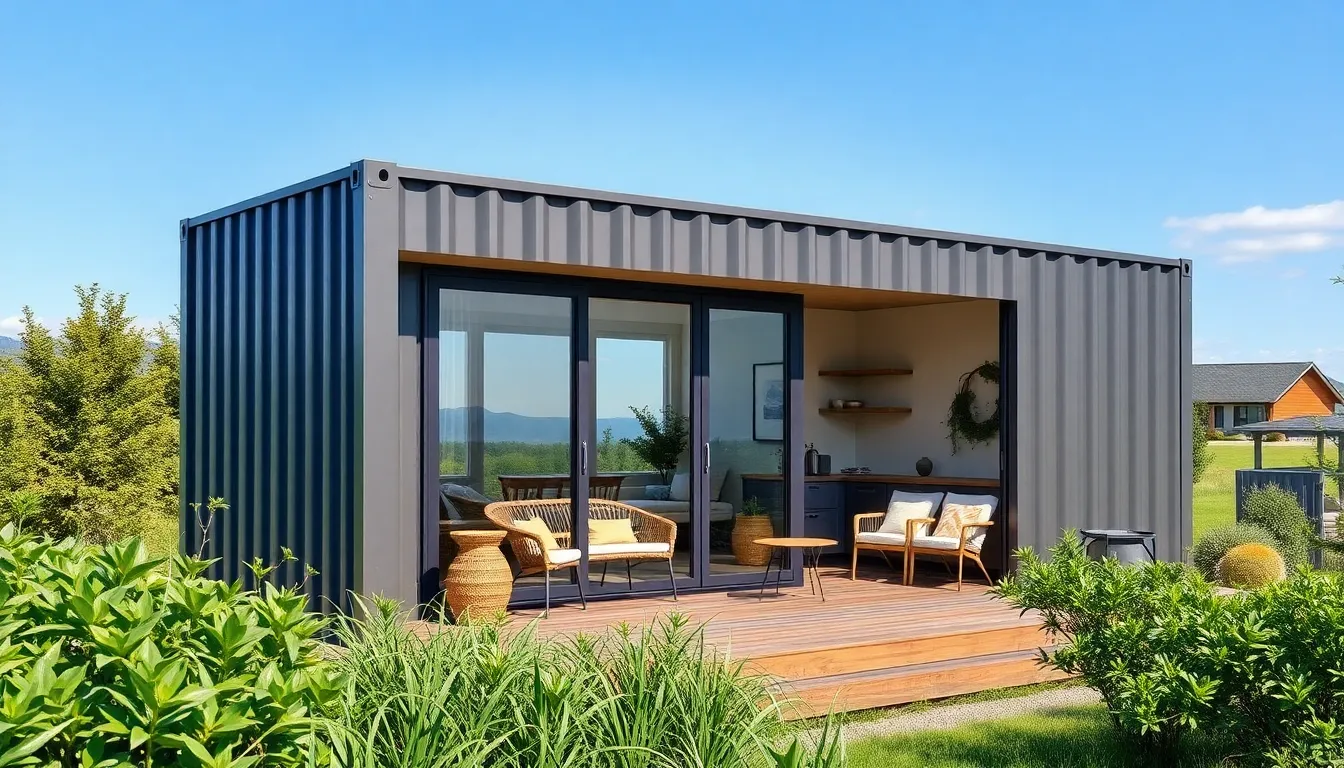
Tiny container homes are exactly what they sound like: homes built using shipping containers. Often repurposed, these containers are highly durable and can serve as a unique foundation for a living space. The typical shipping container measures around 20 to 40 feet in length, and their sturdy walls offer endless design possibilities. Think of these boxes as blank canvases, ready for creative minds to transform them into cozy retreats.
Using shipping containers for homes skyrocketed in popularity due to their versatility and sustainability. They can be stacked, modified, and accessorized to fit individual needs. Tiny container homes not only represent a shift towards minimalism, they also stand as a symbol of innovative living solutions. With the world facing increasing environmental challenges, these compact homes provide an efficient answer to housing crises while encouraging a sustainable lifestyle.
Benefits of Living in a Tiny Container Home
Living in a tiny container home comes with a plethora of benefits. First, there’s the eco-friendly factor: they often require fewer materials to construct than traditional homes. This not only saves resources but also minimizes waste. Also, many tiny container homes use sustainable practices like solar panels or rainwater collection systems, further reducing their carbon footprint.
Next up is the cost savings. Downsizing to a tiny container home can drastically reduce mortgage or rental expenses. With fewer maintenance requirements and lower utility bills, residents often find that they can redirect their finances towards experiences rather than material possessions.
Also, these homes promote a simpler lifestyle. By downsizing, individuals are encouraged to declutter and prioritize essentials. Living in a tiny container home promotes mindfulness and a deeper appreciation for the things that truly matter.
How to Build a Tiny Container Home
Constructing a tiny container home is an exciting adventure filled with unique challenges and opportunities. First, select the right shipping container. Depending on budget and design aspirations, you can choose new or used containers. Ensure they’re in good condition, free from rust or significant damage.
Next, consider the site and local zoning regulations. Tiny homes often face stricter codes, so checking local laws ensures that the build can be completed without a hitch. Once these factors are settled, it’s time for design. Many opt for an open floor plan to maximize the space, featuring multi-functional furniture to save room.
After the planning stage is complete, it’s time for the fun part: renovations. Insulating the container is crucial for temperature control. Adding windows and doors not only enhances aesthetics but also improves ventilation. Finishing touches can include everything from interior paint choices to outdoor landscaping, turning the container into a beautiful sanctuary.
Design Ideas for Tiny Container Homes
When it comes to design, tiny container homes have limitless possibilities. One popular approach is to create an open floor plan. This design strategy allows for flexibility and makes the space feel larger than it is. Consider incorporating large windows to flood the interior with natural light while maintaining a connection with the outdoors.
Also, many tiny home advocates embrace a minimalist aesthetic. Use multifunctional furniture, like a sofa that converts into a bed, to maximize space efficiency. Built-in storage can also help reduce clutter, think shelves and cabinets that use vertical space.
For those looking to add a touch of personality, patterns, colors, and textures can be creatively layered. Whether it’s through vibrant wall paint or a unique outdoor deck, these tiny homes can embody the personality of their owners while remaining efficient and functional.
Challenges and Considerations
Tiny container homes are not without challenges. One primary concern is space, many first-timers underestimate their storage needs. It requires a significant lifestyle shift to adapt to a smaller footprint. Also, plumbing and electrical considerations can complicate things and may require hiring professionals.
Local regulations can also pose hurdles. Not every city or town allows tiny living, so potential homeowners must be prepared to navigate these laws. Inspections, permits, and lot restrictions can add layers of complexity to the build.
Finally, climate plays a critical role. Container homes can heat up disproportionately in hot weather and may not be as well-suited for certain environments without proper insulation and ventilation. Addressing these challenges upfront can streamline the process and lead to a more enjoyable tiny living experience.
The Future of Tiny Container Homes
The future of tiny container homes appears bright, as more people search for affordable housing solutions. With rising urban density and housing costs, tiny homes offer a sustainable alternative that meets both environmental and financial needs. Architects and designers are continuously innovating, finding new ways to incorporate technology into these spaces, from smart home systems to energy-efficient appliances.
Also, social movements pushing for minimalism and sustainable living contribute to the rise of tiny container homes. This shift reflects a desire for more purposeful living, prioritizing experiences over possessions. With advancements in sustainability, we can expect to see even more eco-conscious designs that make tiny living even more appealing.

